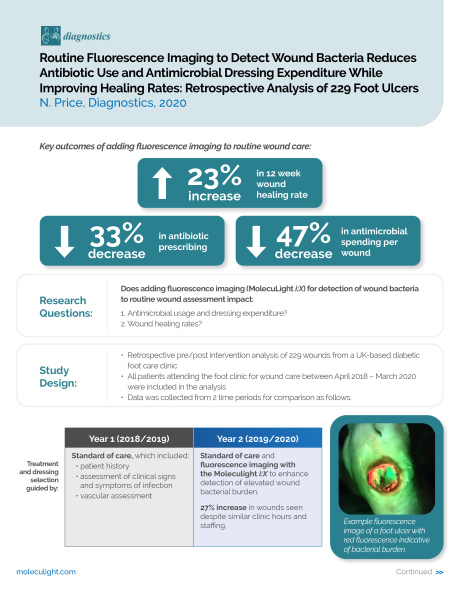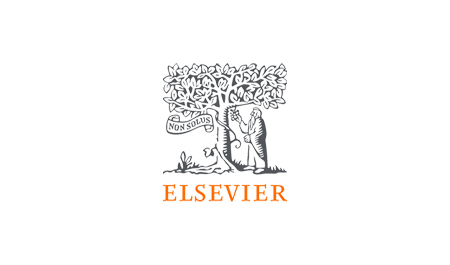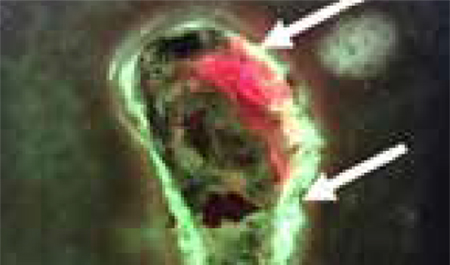Abstract:
Foot ulcers and their bacterial burden produce a significant strain on the National Healthcare System (NHS). Subjectivity of wound infection assessment makes appropriate dressing selection challenging. To aid point-of-care detection of bacterial burden, a fluorescence imaging device (MolecuLight i:X) was introduced to the Whipps Cross Hospital Podiatry clinic. This retrospective pre/post-analysis evaluated how implementation of fluorescence imaging impacted (1) antimicrobial dressings and antibiotics use and (2) wound healing rates. Over a 2-year period 229 lower extremity wounds were treated. Wound-related outcomes and antimicrobial dressing costs were quantified over 1-year before (2018/2019) and after (2019/2020) incorporating fluorescence imaging into routine practice. The period of fluorescence imaging saw a 27% increase in the number of wounds seen, yet annual antimicrobial dressing expenditure decreased by 33%. Implementation of fluorescence imaging was also associated with a 49% decrease in prescription of antimicrobial dressings, a 33% decrease in antibiotic prescriptions, and a 23% increase in wound healing rates within 12-weeks (48% vs. 39%), likely due to earlier bacterial detection and improved wound hygiene. This increased healing rate is projected to decrease annual wound costs by 10% (£762 per patient). Routine bacterial imaging appears to diminish clinical and economic burden to patients and the NHS.
Keywords: dressing selection; diabetic foot ulcer; antimicrobial; fluorescence imaging; wound assessment; bacteria; MolecuLight














